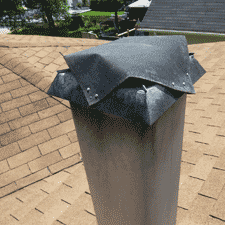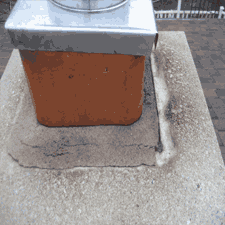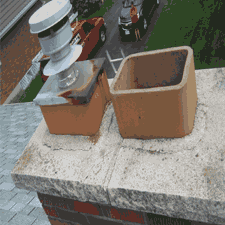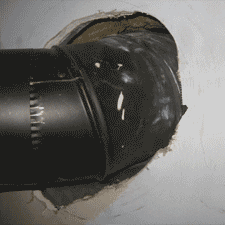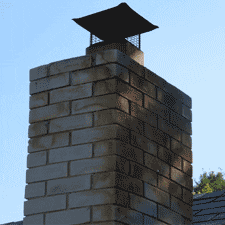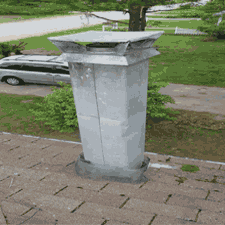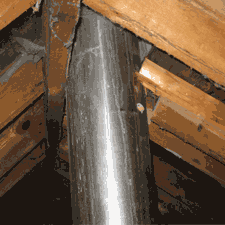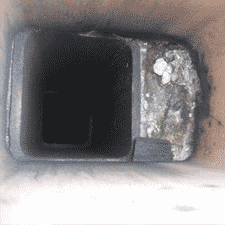Wett is actually a training organization that teaches Certified WETT inspectors to check for code compliance and safety with wood burning appliances. They often are involved when you buy or have a wood burning appliance like a fireplace or wood burning stove installed. They also may help with maintenance and the prevention of problems. When someone is WETT Certified, it means that they are certified to perform safety checks and maintenance on a wood burning appliance. The term doesn’t apply to your wood burning stove or fireplace, but rather, to the person who is inspecting these appliances.
In Canada, wood burning appliances are regulated by the codes in CSA B365, but how do you know if your home is safe unless you have a WETT inspection completed? One of our Certified Inspectors will come into your home to inspect your fireplace or wood stove for a Site Basic inspection for insurance purposes.
If you are heating your home with wood and have never had an inspection you could be at risk! A WETT Inspection verifies the condition and code compliance of the unit and its major safety components.
Protect your families safety Having your chimney cleaned semi-annually can provide you with the “Peace Of Mind” knowing your fireplace or wood stove is safe. As Certified WETT Inspectors, we can provide a WETT inspection with a report delivered on-site as soon as the inspection is completed!
In most cases, a basic visual inspection will be enough to tell the inspector if the installation of your wood burning appliance is safe. In other cases, you may need a more intensive type of inspection to make sure that even the parts you can’t see are working properly. A WETT certified member can handle basic visual inspections, but it takes a WETT certified technician to actually conduct the more intensive inspections. Technicians can also perform maintenance on wood burning appliances or fix major problems that you may have with them. If your fireplace has old flue tile we recommend hiring a WETT Certifed Chimney Sweep to clean chimney and then inspect for cracks or damage.
Every homeowner who has a wood fireplace in their home should be having regular professional inspection and professional cleaning at least once a year to make sure that it’s functioning properly and there is not damage to any compontents. After all, the fireplace allows you to have a fire inside your home, so the number of things that could go wrong is significantly higher than in homes that don’t have a wood fireplace. But losing your home to a fire is a tragedy that can be avoided entirely if you have regular professional wood fireplace inspections and do everything you can to take care of your fireplace.
You and your family’s safety is important. Having a WETT Inspection performed prior to using your wood burning appliance can provide you with the “Peace Of Mind” knowing your fireplace or wood stove is safe. As Certified WETT Inspectors, we can provide a WETT inspection within 24 hours!
Only $100.00 when conducted as part of Home Inspection package!
History of Wood Burning Stoves
Wood heat was not only the main source of heat for our fore fathers, wood fires also were used for cooking, heating water for clothes washing, baths and all the essentials of life. To accomplish these task there was normally an open fireplace. I am sure most of you have seen pictures of the pioneer housewife with the pot of food dangling on a hook inside the open fireplace.
A wood burning stove consists of a sealed combustion chamber (in which the wood is burned) connected via a stovepipe to a flue that vents smoke and other combustion products to the outside. It is the fact of being sealed that is one of the main distinguishing features of wood burning stoves. They are popularly believed to have their origins in the Franklin Stove though this itself was derived from earlier designs, and ironically initially employed an open, rather than sealed, design.
EPA ” Environment protection agency ” was the catalyst that dictated the newer generation high technology stove. The EPA mandated that all new stoves must emit only very minimal pollutants to the environment. To overcome the health hazard from the pollutants from the smoke, EPA set particle emission standards to which the stove had to meet, similar to the automobile industry, that the manufacturers had to meet in order to legally sell their wood stoves.
The next generation of Wood Stoves and Wood Inserts became popular as many homes had open fireplaces that were very attractive but very inefficient. These Wood Stoves and Inserts had a fairly good controllable airflow, usually with some sort of restrictive baffling system, allowing approximately 30% efficiency from the wood fuel. For many years these stoves heated the homes and were considered to be a wonderful heat source. Today, these types of stoves are illegal to sell in most states, due to the high particle emissions emitted from the exhaust chimney. As our population has increase, it has become necessary to reduce the particles being emitted from the stoves in the form of smoke. Studies have confirmed that the particles from the stove smoke are not only a nuisance, but also cancerous as the particles will lodge in the lungs of people.
Biomass fuel is essentially any type of renewable biological material that has good combustion. It obviously has the desirable characteristic that being renewable implies a life cycle, and hence a period of growth which typically ensures it is self-balancing as regards carbon output. The most commonly used biofuels are of course logs, wood pellets and other forms of reclaimed wood, but you can even burn husks from cereal crops and nuts (so long as your particular burner is capable of accepting it).
Not everyone is able to take advantage of a wood burning stove though. Common impediments are an unsuitable property, air pollution regulations, lack of access to or storage space for fuel (principally seasoned wood or specially manufactured pellets). And anyway, there isn’t at present the capacity or infrastructure to support everyone converting to wood burners.
When buying or installing a wood burning appliance in your home, you should have unit inspected by a WETT Certified Inspector. Most insurance companies will require an inspection report from a WETT Certified Inspector prior to issuing a home insurance policy.
Installation Requirements for Wett inspection
Wood Energy Technology Transfer Inc. (WETT Inc.) is a non-profit training and education association managed by a volunteer Board of Directors elected by holders of valid WETT certificates. Through its administrative designate, WETT Inc. functions as the national registrar of the WETT program. Through professional training and public education, WETT Inc. promotes the safe and effective use of wood burning systems in Canada.
The WETT system consists of several courses recognizing the various types of work done by wood energy professionals. Certification is achieved by completing courses to earn educational credits. A technical reference manual has been prepared to assist trainees in preparing for courses and as a reference manual for certificate holders.
In Canada every chimney must be installed in accordance with B365-01 and the National Building Code or Provincial Building Code applicable to where you are installing appliance.
Every wood stove installation requires a sound masonry chimney (more on these later) or a UL approved Stainless Steel Class “A” Insulated Chimney. The WETT inspector will identify and ensure the proper chimney or flue pipe is being used.
A solid fuel appliance shall not be connected to a chimney that serves a natural gas or propane fired device. Only a solid fuel burning appliance certified for use in conjunction with oil-fired equipment shall be connected to a venting system serving an oil-fired appliance.
A solid fuel burning appliance shall not be connected to a chimney that is connected to a fireplace or incinerator, except where; (a) the fireplace or incinerator is made inoperable; (b) all entries to the chimney flue, other than the appliance flue pipe, are effectively sealed with noncombustible materials; (c) access for cleaning is provided; and (d) the fireplace damper handle is made inoperable.
A flue pipe shall be securely supported from the structure by means of metal or other noncombustible supports and horizontal pipes shall be supported at intervals not exceeding 3 m. the flue pipe shall be as short and straight as practical; and a single wall pipe shall not exceed 3 m total length of pipe and shall not have a total change in direction of more than 180 degrees.
When a flue pipe is passing through a thimble, the female end of the flue pipe shall reach but not protrude beyond the interior surface of the flue. The male end of the flue pipe shall extend beyond the thimble by at least 30 mm. A flue pipe or manifold serving one or more solid-fuel-burning appliances shall be constructed of steel or other approved noncombustible material with melting point of not less than 1100 degrees Celsius. Galvanized steel shall not be used.
Remember to check with your local building department if constructing a masonry chimney and fireplace. Inspection of the hearth, liner, damper and throat of fireplace must take place before enclosing with masonry or brick. A WETT inspection is only for your insurance company and will not always be accepted by the local Building Department.
The Barrie Home Inspector offers Free Thermal Imaging with every home inspection. Using an Infrared Camera can help find hidden moisture, missing insulation and electrical hot spots.
Certified WETT Inspections for wood stoves, fireplaces and pellet stoves is only $75.00 when included as part of home inspection. Most insurance companies now require a recent WETT Certified Inspection when purchasing a home.

